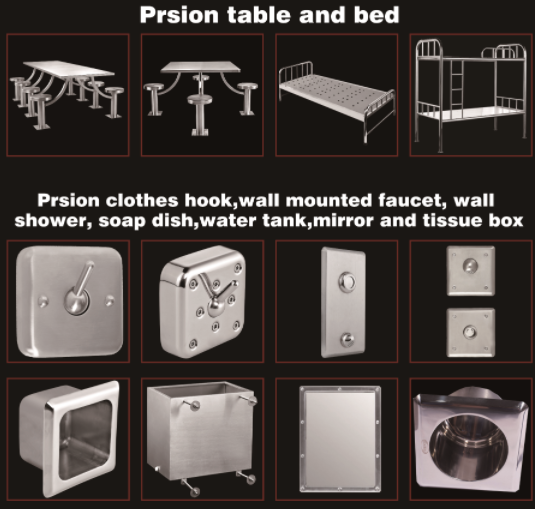When discussing prison facilities, the focus is often on security and functionality. However, the role of prison furniture, including prison cell toilets and prison beds, cannot be overlooked. These essential elements contribute significantly to the overall environment and operational efficiency of correctional institutions. This comprehensive guide delves into the world of prison furniture, examining the importance of durability, design, and functionality in creating a secure and effective prison environment.
**1. The Importance of Prison Furniture:**
Prison furniture is designed to withstand the rigors of a high-stress environment. It must be durable, secure, and functional, catering to the unique needs of a correctional facility. From prison bunk beds to prison cell toilets, every piece of furniture plays a critical role in maintaining order and safety within the prison system.
**2. Prison Bed - A Foundation for Rest:**
The prison bed is more than just a place for inmates to rest; it's a symbol of the structure and discipline inherent in the prison system. These beds are designed to be sturdy and simple, often made from stainless steel materials. The focus is on durability and ease of maintenance, as these beds must withstand daily use and the test of time.
**3. Prison Cell Toilet - A Necessity for Hygiene:**
The prison cell toilet is a critical component of any prison cell, ensuring basic hygiene and human dignity. These toilets are typically made from stainless steel, materials known for their resistance to corrosion and damage. The design of a prison cell toilet often includes features that prevent it from being used as a weapon or a means of escape, emphasizing security as well as functionality.
**4. Durability in Prison Furniture:**
Durability is a key consideration in the design and manufacture of prison furniture. Prisons are harsh environments, and furniture must be able to withstand constant use, potential vandalism, and the test of time. Materials such as stainless steel is often used to ensure that prison furniture can endure the challenges it faces daily.
**5. Designing for Security:**
Security is paramount in prison furniture design. Every piece of furniture must be scrutinized for potential security risks. For example, prison beds are often designed to prevent the storage of contraband, while prison cell toilets are designed to be tamper-proof and to prevent any form of structural damage that could aid in an escape attempt.
**6. Functionality and Comfort:**
While security and durability are crucial, functionality and a basic level of comfort should not be neglected. Prison furniture should facilitate the daily routines of inmates and staff alike. For instance, prison beds should provide a reasonable level of comfort to ensure adequate rest, and prison cell toilets should be designed for ease of use and cleanliness.
**7. The Role of Prison Furniture in Inmate Management:**
Prison furniture plays a role in inmate management by providing a structured environment that supports the prison's rules and regulations. The design and layout of furniture can influence inmate behavior, promoting order and reducing the potential for conflict.
**8. Maintenance and Cost-Effectiveness:**
Prison furniture must be low-maintenance and cost-effective. Correctional facilities have limited budgets, and furniture must be affordable while still meeting the high standards of durability and security. Regular maintenance is also a consideration, as prison furniture should be easy to clean and repair.
**9. Environmental Considerations:**
In recent years, there has been a growing focus on the environmental impact of prison furniture. Sustainable materials and manufacturing processes are becoming more prevalent, as prisons seek to reduce their carbon footprint and contribute to environmental conservation efforts.
**10. Future Trends in Prison Furniture:**
As technology advances, so too does the design and functionality of prison furniture. We are seeing the integration of technology in prison beds and prison cell toilets, such as sensors for monitoring inmate activity and smart toilets that can assist in health monitoring. These advancements promise to improve security, efficiency, and the overall prison experience.
**Conclusion:**
Prison furniture is a critical component of the correctional system, providing a balance between security, functionality, and comfort. As the needs of prisons evolve, so too will the design and manufacture of prison furniture. By focusing on durability, design, and functionality, prison furniture can contribute to a safer, more efficient, and more humane prison environment.


